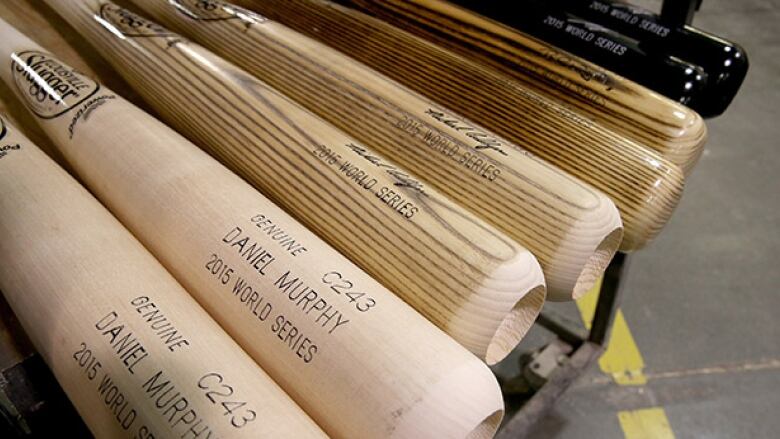Louisville Slugger braces for attack of tiny killer beetle
Ash borer beetle forcing Major League baseball players to switch to maple bats

Babe Ruth, Hank Aaron and Derek Jeter made a good living and entered the history books swinging the iconic Louisville Slugger bat. Ever since 1884, when Hillerich & Bradsby Co. started making the bats from the wood of the white ash tree, the sticks have reigned supreme among the sport's top stars.
But the ash bat may be heading for extinction, killed off by a tiny killer beetleone that some scientists say may be thriving because of a warmer climateand by competition from maple.
The real Green Monster?
Shaped like a fat green cigar with wings, the ash borer looks harmless enough. It has a stubby head, a shimmering emerald-green body and is shorter than the diameter of a penny.
Since it was first identified in Detroit and Windsor, Ont., in 2002, the borers have shown a big appetite for ash forests. They do their damage as larvae, burrowing inside trees and feeding under the bark. By doing so, they cut off water and other nutrients to the rest of the tree.
"One insect doesn't do much damage," explains Daniel Herms, a professor of entomology at Ohio State University. "But trees get attacked by thousands, and collectively, they can destroy the tree very quickly."
Herms says it typically takes from one to four years after the initial infestation for ash trees to start dying. Within six years, entire forests are completely dead.
The beetle has spread across 25 U.S. states and large swaths of Ontario and Quebec. Though it can fly, it has spread mainly through the movement of firewood.
The warming climate may also be contributing to the problem.
"If you have warmer winters, the likelihood of more beetles surviving will increase, so you will get greater beetle production, and they will be more productive and spread faster, says Robert Currie, a professor of entomology at the University of Manitoba."
Ash adaptation
Hillerich & Bradsby Co. in Louisville, Ky., owns about 8,500 acres of white ash forests in New York and Pennsylvania. With its moist soil and temperate climate, the region has long been the sweet spot of ash baseball bats.
Bob Hillerich, the director of wood bat manufacturing, says the company is watching the spread of the emerald ash borer carefully. Right now, the borer is right on the fringe of the company's forests, but bat makers have already started planning for its inevitable spread by working closely with the U.S. Department of Agriculture. It has also started to look at manufacturing bats made of other woods such as birch and red oak in case the worst-case scenario becomes reality.
"We started planning five or six years ago," says Hillerich. "We don't know if ash will be totally eradicated, but just in case, we're doing some backup."
Herms isn't optimistic. "It just doesn't look good. Preventative measures are really limited here. You can only slow the spread."
U.S. Forest Service representatives now provide regular briefings to major-league officials on the situation.
The allure of maple
In the meantime, the growing popularity of maple bats may be a more immediate threat.
Players began to prefer maple bats after Barry Bonds swung one to break the single-season record for home runs in 2001.
Kevin Malloy, the Toronto Blue Jays' clubhouse manager, says that 80 to 90 per cent of Blue Jays' batters now use a maple bat.
Carlos Delgado was one of the last big Blue Jays to use an ash bat.
"He was adamant on not changing to maple," Malloy explains. "In his last few years, a lot of the guys were switching to maple, but he was definitely in favour of the ash."
Although maple is denser and heavier, it is perceived to be a better and more consistent wood. Players tend to like the feel of maple bats, Malloy says, even if they explode when they break in two sometimes putting fans, players, coaches and umpires in harm's way.
A fan suffered life-threatening injuries this past June at Fenway Park, when the barrel of a broken maple bat went flying into the stands, striking her violently in the face. Though Major League Baseball tried to do its due diligence on the problem in 2009 by implementing manufacturing guidelines, the incident in Boston has renewed calls for tougher restrictions on maple bats.
"Each one of these maple bats has to pass a test before it can be used at a pro level," Malloy says.
"It can't just be some fly-by-night company that sells us wood."












_(720p).jpg)


 OFFICIAL HD MUSIC VIDEO.jpg)
.jpg)



























































































